The history of Krishna consciousness from its origins to the present day.
- Origins
- Vaishnava Renaissance
- A. C. Bhaktivedanta Swami Prabhupada
- Krishna’s message arrives in Hungary
- History of Krishna Consciousness in Hungary
India’s ancient scriptures were first written down 5000 years ago although they are tens of thousands of years old. Their teachings are classified as shabda, revealed knowledge because they were spoken by Lord Krishna directly. His recommendations and instructions for everyday life and for spiritual practice have been passed down through the disciplic succession until a qualified person preserved them in the written form also. Either indirectly or directly, Krishna appears as the Supreme Personality of Godhead in all Vedic scriptures (e.g. the Vedas, Upanishads, Puranas, Mahabharata). In all these books, Lord Krishna declares over and over again that the ultimate goal of all study and inquiry is knowing Him in His personal form.
More than 5300 years ago Lord Krishna appeared on earth as a cowherd boy to personally demonstrate the simple and pure religious life that can help us attain the real goal of life: going back to God in the spiritual world. Lord Krishna spent His early years in Vrindavana while He lived mostly in Dvaraka as an adult although he also stayed in Mathura for some time. You can still visit the holy places of His pastimes and activities in India.
Vaishnavism, also called Krishnaism, belongs to the major tradition of Hinduism. There are an estimated 600 million followers of Vaishnavism, most of whom live in India.
Vaishnavism is a monotheistic religion with Krishna worshipped as the Supreme Personality of Godhead. Reincarnation, the law of karma, nonviolence and subsequent vegetarianism as well as the importance of relationship between the spiritual master and disciple are among the pivotal teachings of Vaishnavism. It has four major disciplic successions or schools which are named after their prominent teacher or the disciple who first received instructions from the Lord.
Krishna consciousness, as it is known in the West, belongs to the disciplic succession starting with Lord Brahma. Madhvacarya was the tradition’s foremost medieval representative and Isvara Puri, Lord Caitanya’s spiritual master appeared in his disciplic succession.
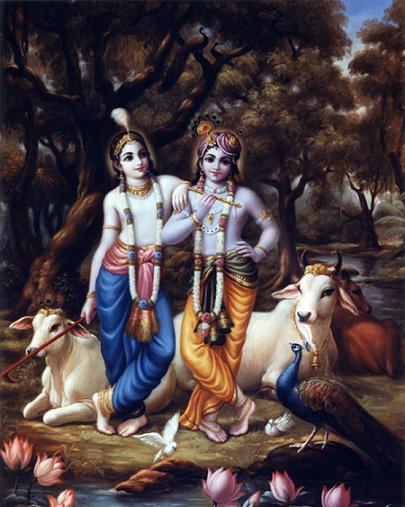
During the 15th century, the culture of Vaishnavism was most prominent in Bengal, in East India thus this branch of Krishna consciousness is known as Gaudiya Vaishnavism. The greatest Vaishnava teacher of all times, Sri Caitanya Mahaprabhu (1486-1533), appeared in Bengal and He is respected by His followers as an incarnation of God, an appearance of Krishna on earth. All the saints of the Vaishnava renaissance lived around the area of Lord Caitanya’s birthplace. This province of India is called Gaudiya-desa and therefore the full name of the Krishna conscious tradition is Brahma-Madhva-Gaudiya disciplic succession.
Besides propagating profound philosophical teachings, Lord Caitanya also recommended the individual and congregational chanting of the Hare Krishna, Hare Krishna, Krishna Krishna, Hare Hare, Hare Rama, Hare Rama, Rama Rama, Hare Hare as the most important means of self-realisation. His mission of selfless devotion to Krishna brought about a spiritual revolution in medieval India.
Sri Caitanya’s legacy was carried on by His most confidential disciples, the six Gosvamis. In the wake of their efforts, 219 books and innumerable accounts were written about the life of Caitanya and the essence of Vaishnava teachings, the most wide-ranging and systematized collections on the science of God.
Srila Bhaktivinoda Thakura (1838-1914) was a preeminent spiritual master in the 19th century. He is especially outstanding because by sending copies of one of his English books to Europe and North America, he lit the first spark of Vaishnava teachings in the West while also reinforcing the practice of Krishna worship in India. After his departure, his son, Srila Bhaktisiddhanta Sarasvati Thakura (1874-1937) continued his father’s legacy. He established an India-wide Vaishnava association and wrote and translated books in English to make this knowledge widely available.
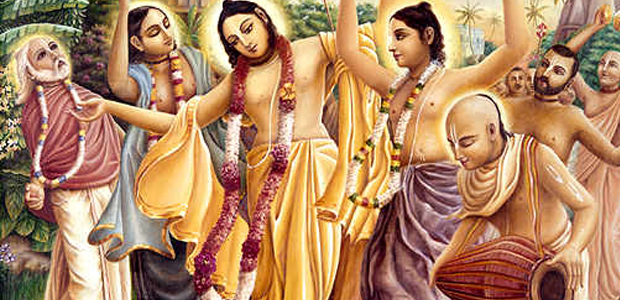
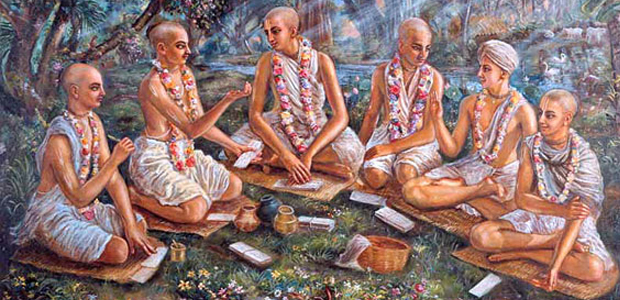
Bhaktisiddhanta Sarasvati requested one of his disciples to take Krishna Consciousness, the teachings of Sri Caitanya to the Western world. This disciple later became well known all over the world as His Divine Grace A.C. Bhaktivedanta Swami Prabhupada. Prabhupada wrote a commentary to the verses of Bhagavad-gita, the most renowned Sanskrit scripture and became a respected spiritual teacher in India.
In 1965, at the age of 69, Prabhupada embarked on the greatest and most dangerous mission of his life. He boarded a cargo ship bound for the USA to teach Vaishnava spiritual principles to a Western world that was becoming more and more materialistic.
In June 1966, after extraordinary efforts and due to his spiritual strength and pure devotion,
His Divine Grace A.C. Bhaktivedanta Swami to set up the International Society for Krishna Consciousness (ISKCON).
In his later years, he wrote and translated sixty volumes of English books, established more than a hundred temples around the globe, set up schools and self-sufficient farm communities and gave initiation to five thousand disciples.
His mission was successful: Krishna consciousness, which previously was only known in the East, became widely known all over the world and as a result, hundreds of thousands of people thoroughly changed their life understanding that the ultimate goal of life and the source of happiness is returning to the Lord.
The seven purposes of the International Society for Krishna Consciousness are:
- To systematically propagate spiritual knowledge to society at large and to educate all peoples in the techniques of spiritual life in order to check the imbalance of values in life and to achieve real unity and peace in the world.
- To propagate a consciousness of Krishna as it is revealed in the Bhagavad-gita and Srimad Bhagavatam.
- To bring the members of the Society together with each other and nearer to Krishna, the prime entity, and thus to develop the idea, within the members, and humanity, at large, that each soul is part and parcel of the quality of Godhead (Krishna).
- To teach and encourage the Sankirtan movement of congregational chanting of the holy name of God as revealed in the teachings of Lord Sri Chaitanya Mahaprabhu.
- To erect for the members, and for society at large, a holy place of transcendental pastimes, dedicated to the personality of Krishna.
- To bring the members closer together for the purpose of teaching a simpler and more natural way of life.
- With a view towards achieving the aforementioned purposes, to publish and distribute periodicals, magazines, books and other writings.
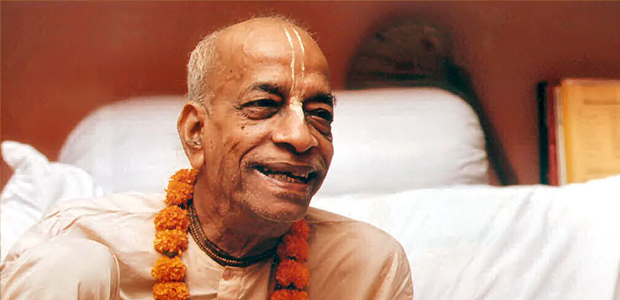
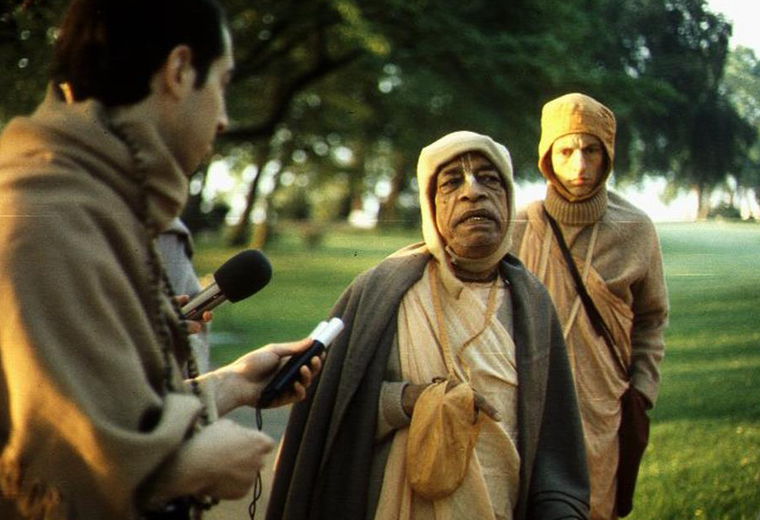
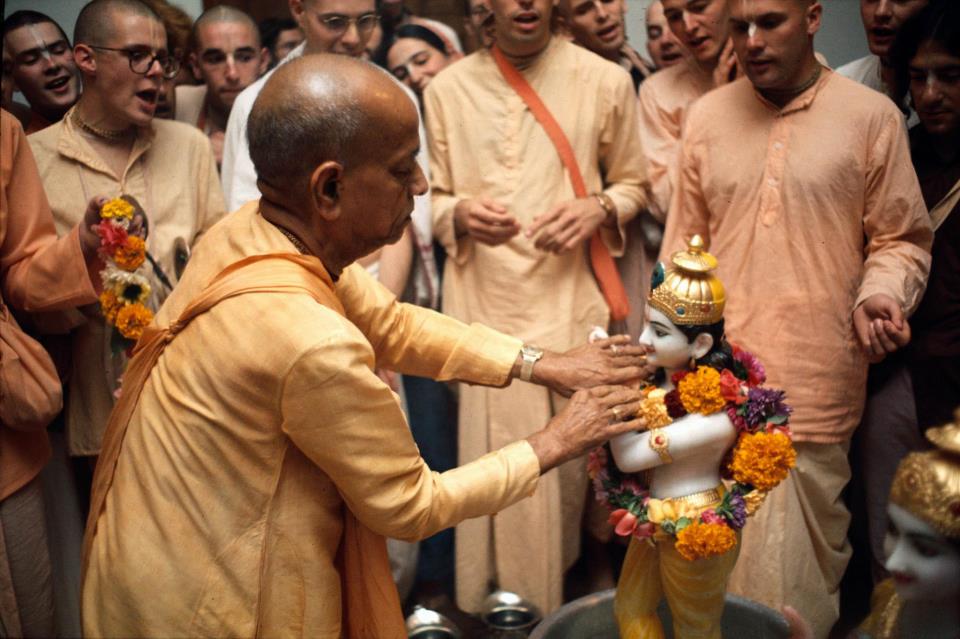

After Prabhupada’s departure, his disciples and followers took on the mission of their spiritual master. Sivarama Swami, one of Srila Prabhupada’s disciples, established the Hungarian Society for Krishna Consciousness (Magyarországi Krisna-tudatú Hívők Közössége (MKTHK)) which was officially registered in 1989. As a representative of Vaishnava philosophy and culture in Hungary, the community established two major temples, two centres and the Indian Cultural Centre and Ecofarm in Krishna Valley in Somogyvámos as well as the Bhaktivedanta Theological College. The education of children and young people and promoting the importance of lifelong learning are of crucial importance in Krishna Consciousness. The community also maintains an exemplary food distribution programme.
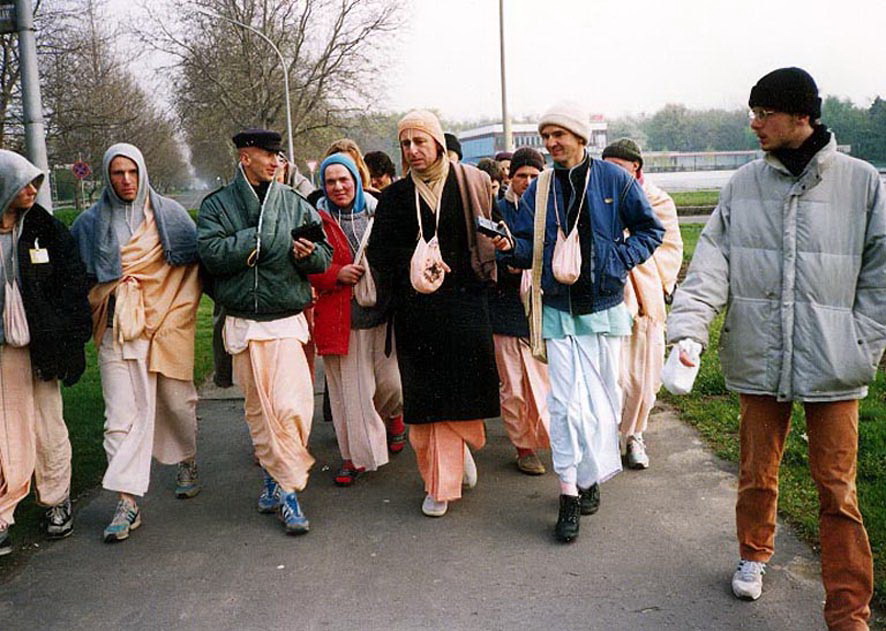
Hungarian devotees in the ‘70s
The first Hungarian devotees found out about the Vaishnava tradition of Hinduism in 1976. Although the scriptures of Krishna Consciousness, the Vedas, are tens of thousands of years old, people only started practising it in the West in the 20th century. Studying the Vedic scriptures is very important in Krishna Consciousness. First there were only a few devotees in Hungary but they invited the founder and foremost spiritual master of ISKCON, Srila Prabhupada. He was supposed to arrive in Budapest in August 1977, but his visa application was denied by the government so he couldn’t personally meet with Hungarian devotees. They kept in touch by correspondence.
By 1976 devotees held daily gatherings and during the second half of the year, several bhaktas (devotees) moved together in an apartment on Fehérvári Road and spiritual teachers visited regularly from abroad (e.g. Austria and Germany). In August 1977, the first Hungarian disciples were initiated on Srila Prabhupada’s behalf. This year also saw the publication of the first books in Hungarian, e.g. Perfection of Yoga. Then in 1980, Bhagavad-gita, the main scripture of Krishna Consciousness was published along with the first vegetarian cookbooks. The devotees continued with their spiritual gatherings in different apartments and these were attended by 40-50 followers.
Events of the ‘80s
The present religious leader of the Hungarian Society for Krishna Consciousness is Sivarama Swami. Parama Karuna das, one of the first initiated Hungarian disciples, met him in India in 1980. Sivarama Swami was born in Hungary and speaks Hungarian so the devotees invited him to the country. He first visited Hungary in 1987 and then came regularly. He was the religious leader of the British community at the time but his encouragement and support was very inspiring to the Hungarian devotees too.
By this time, Krishna devotees appeared in most major towns in Hungary and more and more people started following Krishna conscious principles. The devotees got Krishna Consciousness registered as the Hungarian Society for Krishna Consciousness (Magyarországi Krisna-tudatú Hívők Közössége (MKTHK)) in 1989, after the fall of the Communist regime.
After the regime change
Like Krishna Consciousness, other religions that were practised in secret previously could register and practise freely and openly after the regime change. Book distribution, festivals and street chanting parties brought Krishna Consciousness to a wide range of people. In recent years, Krishna Consciousness is often fourth on the list of religions who receive the 1% tax donations - this is evidence of how widely accepted and well regarded Krishna Consciousness is in Hungary. Youth festivals, the annual pilgrimage accompanied by chanting and dancing (pada-yatra) and scholarly conferences (e.g. Existential Inquiry Conference and Interreligious Dialogue) also give opportunities for people to meet Krishna devotees.
There are temples and major preaching centres in Budapest, Eger, Kecskemét, Pécs, Somogyvámos és Debrecen.
MKTHK’s logo
The Hungarian Society for Krishna Consciousness’s logo is a combination of two traditional symbols. One is a tilak mark representing the Vaishnava school of Hinduism in the centre (two vertical lines resembling a U and a leaf shape at the bottom.) And the second are four lotus petal shaped outlines on each side of the tilak’s vertical lines representing the lotus which is the symbol of spiritual endeavours and physical and spiritual purity in Indian religious traditions.
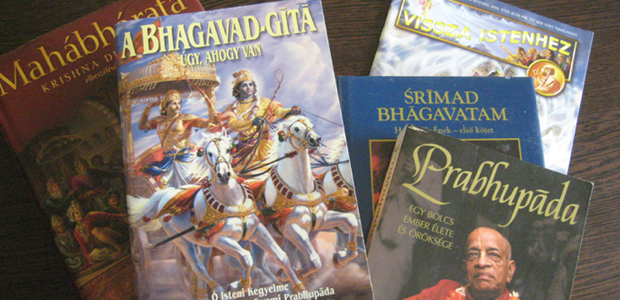




Magyarországi Krisna-tudatú Hívők Közössége 1039 Budapest, Lehel utca 15-17. [email protected]

